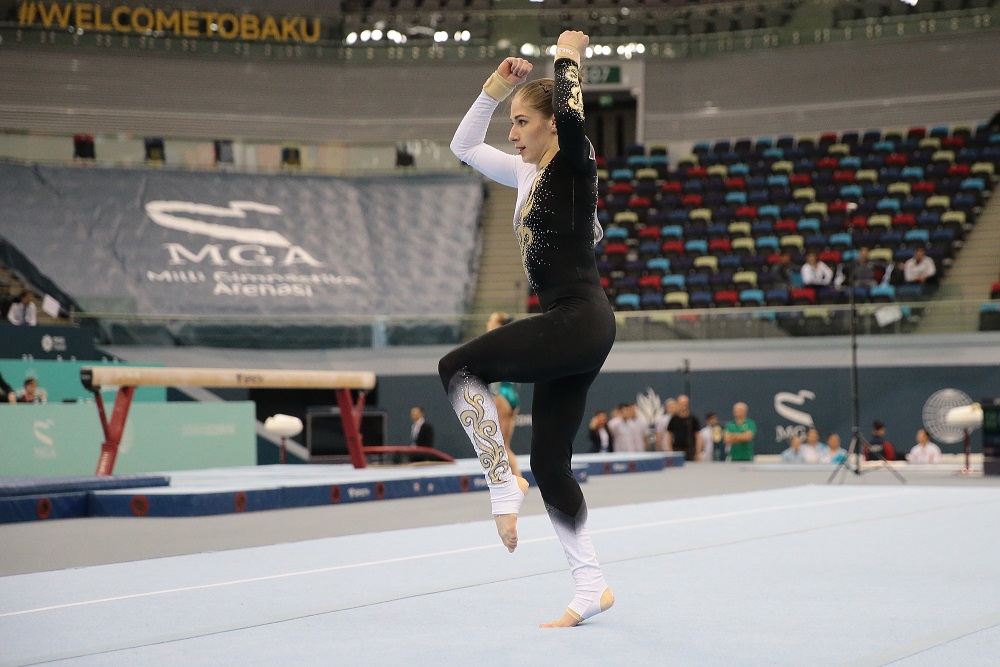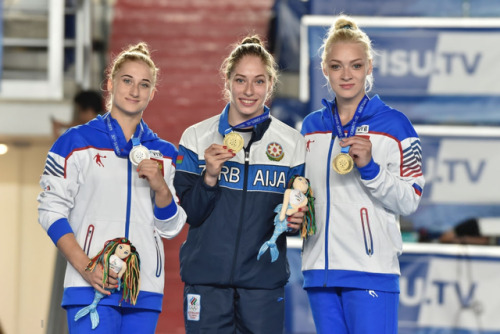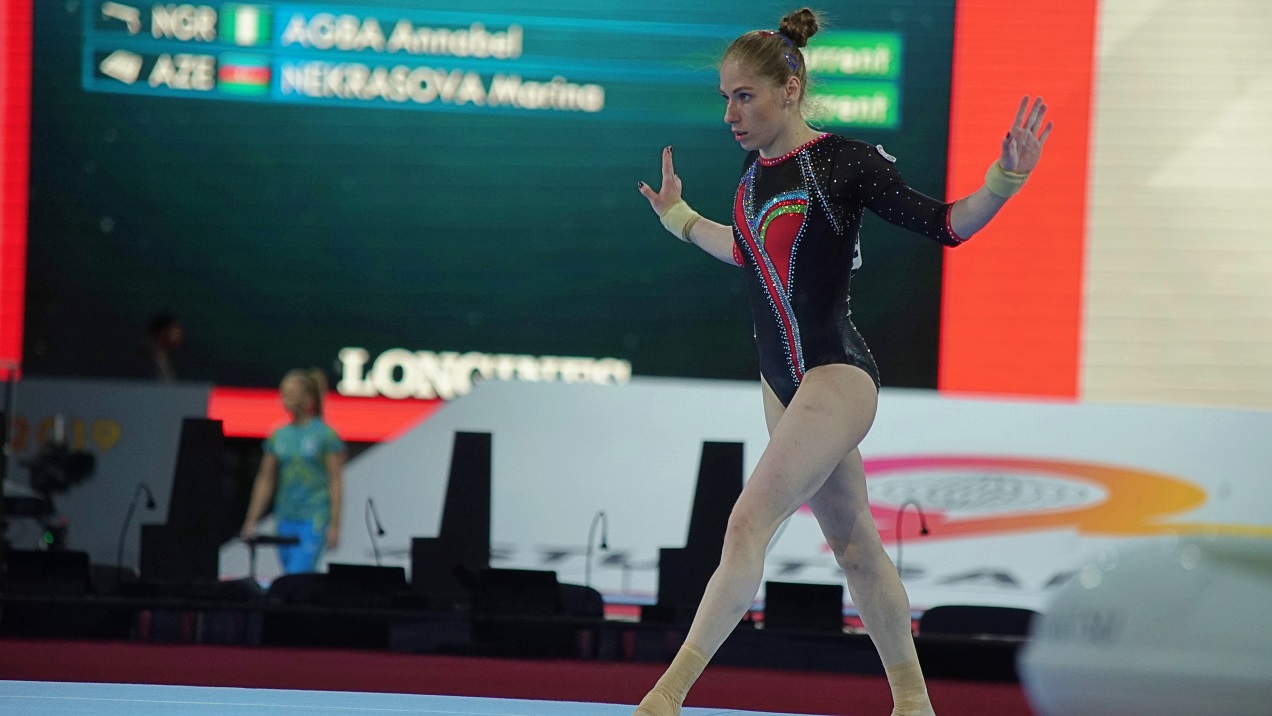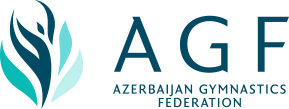- ENG
- AZE
Sport
begins with
gymnastics
Women's Artistic Gymnastics
Women's Artistic Gymnastics is sport discipline, where exercises are executed on 4 apparatus (Vault, Uneven Bars, Balance Beam, Floor Exercise).
Gymnasts test their strength in the All-Around, Apparatus Finals and Team Competition within large-scale events, including the Olympic Games.
Competitors, with a special elegance, perfectly execute balance, walkover, rotation and somersault elements, which require strength, skill, artistry, flexibility. Setting of Floor Exercises to music makes the routines even more spectacular.

At all the events, the difficulty and execution of exercises performed by gymnasts are evaluated taking into account a number of criteria like dynamics, height and distance from apparatus.
The beauty of Women's Artistic Gymnastics lies in its reflection the perfect harmony of elegance, courage and strength.
Women's Artistic Gymnastics in the World
The historical roots of Women's Artistic Gymnastics date back to ancient times. Although women did not participate in the Ancient Olympic Games, they also practiced gymnastics exercises in Ancient Greece. During the Roman Empire, the gymnastics exercises were mainly used for creating an unbeatable army. In the 18th and 19th centuries, gymnastics exercises were once again seen for their value in military exercises in Western Europe, but upper-class women had opportunities to engage in sport.

After the Industrial Revolution and consequent social changes, when women joined the workforce in large numbers, females of all classes began to show interest in sports. Group calisthenics, frequently called Swedish Gymnastics and commonly performed to music, was seen as attractive for women.
Friedrich Ludwig Jahn (1778-1852) is considered to be the founder of modern gymnastics. German educator laid down foundations and developed a set of rules for group-based exercises for the first time.
Team competition was the only event for women at the 1928 Olympic Games in Amsterdam (Netherlands), when they joined the Games for the first time. The four modern events, along with All-Around and Team competitions, have been in place since the 1952 Olympic Games in Helsinki (Finland).

The first Women's Artistic Gymnastics World Championships were held in 1934 in Budapest (Hungary). Nowadays, the World Championships are held every year, except the year when the Olympic Games takes place.
Women's Artistic Gymnastics in Azerbaijan
Women's Artistic Gymnastics has started to be developed in Azerbaijan since the 30s of the last century. Sport careers of Zuleykha Hajiyeva (master of sports of the USSR obtained in 1941), Natalya Abdinova (Champion in a Team Competition at the USSR Championships in 1968 within a team of the Central Council of “Dinamo” Sports Society), as well as Yelena Gurina, Mina Asgarova, Larisa Mehdiyeva (participants of international competitions), played an important role in the establishment of this sport in the country.
Unfortunately, after the dissolution of the USSR, Women's Artistic Gymnastics no longer existed in our country.
The inclusion of Women’s Artistic Gymnastics into the program of the 1st European Games held in Baku in 2015, has given an impetus to its development in our country since late 2013.
As in all gymnastics disciplines, which newly took step towards development, foreign athletes and specialists were involved into the National Team at the first stage of development.
Anna Pavlova, who represented our country during the debut of the Azerbaijani National Team at the European Championships (Sofia, Bulgaria) in 2014, became the Silver medallist on Vault.

Our athletes won 6 medals in total at the Women's Artistic Gymnastics competitions within the framework of the 4th Islamic Solidarity Games held in Baku in 2017 (2 Gold medals - Team Competition (Yuliya Inshina, Marina Nekrasova, Ekaterina Tishkova), Floor (Yuliya Inshina); 3 Silver medals - Vault (Marina Nekrasova), Uneven Bars (Ekaterina Tishkova), Balance Beam (Marina Nekrasova); 1 Bronze medal – Balance Beam (Yuliya Inshina)).
A gymnast M. Nekrasova won the “Gold” on Vault at the 30th Summer Universiade held in Naples (Italy) in 2019.

Our representatives in this gymnastics discipline have also been among the prize-winners of the World Cup series at different times.
For the first time in history of Women's Artistic Gymnastics, our country will be represented in the events of the Tokyo 2020 Olympic Games. This participation was ensured by gymnast M. Nekrasova, who received enough points in the All-Around Qualification of the 2019 World Championships in Stuttgart (Germany).

At present, members of the Azerbaijani National Team in this sport discipline are training at Milli Gimnastika Arenasi (National Gymnastics Arena, MGA), provided with all necessary equipment. In 2014, an Opening Ceremony of MGA took place with a participation of the country’s President, Mr. Ilham Aliyev, and First Vice-President, President of Azerbaijan Gymnastics Federation (AGF), Mrs. Mehriban Aliyeva. Gymnastics stars demonstrated their splendid performances at this facility at the Women’s Artistic Gymnastics events of the 1st European Games.
In 2016, the FIG World Challenge Cup “AGF Trophy” was organized at MGA in Baku for the first time. Afterwards, the Arena has hosted four World Cup series (2017, 2018, 2019 and 2020) in a row, the last two of which (2019 and 2020) qualified for the Olympic Games.
One of the main priorities of AGF is educating of professional coaches and judges in this gymnastics discipline. For this purpose, there were organized the FIG International Judges’ Course in Baku in 2014. Moreover, the Federation periodically organizes national courses for the purpose of raising the level of the professional skills of coaches and judges.
For the purpose of development of Women's Artistic Gymnastics and mass involvement in this discipline in our country, AGF is carrying out a number of activities, along with hosting international competitions.
Apparatus




